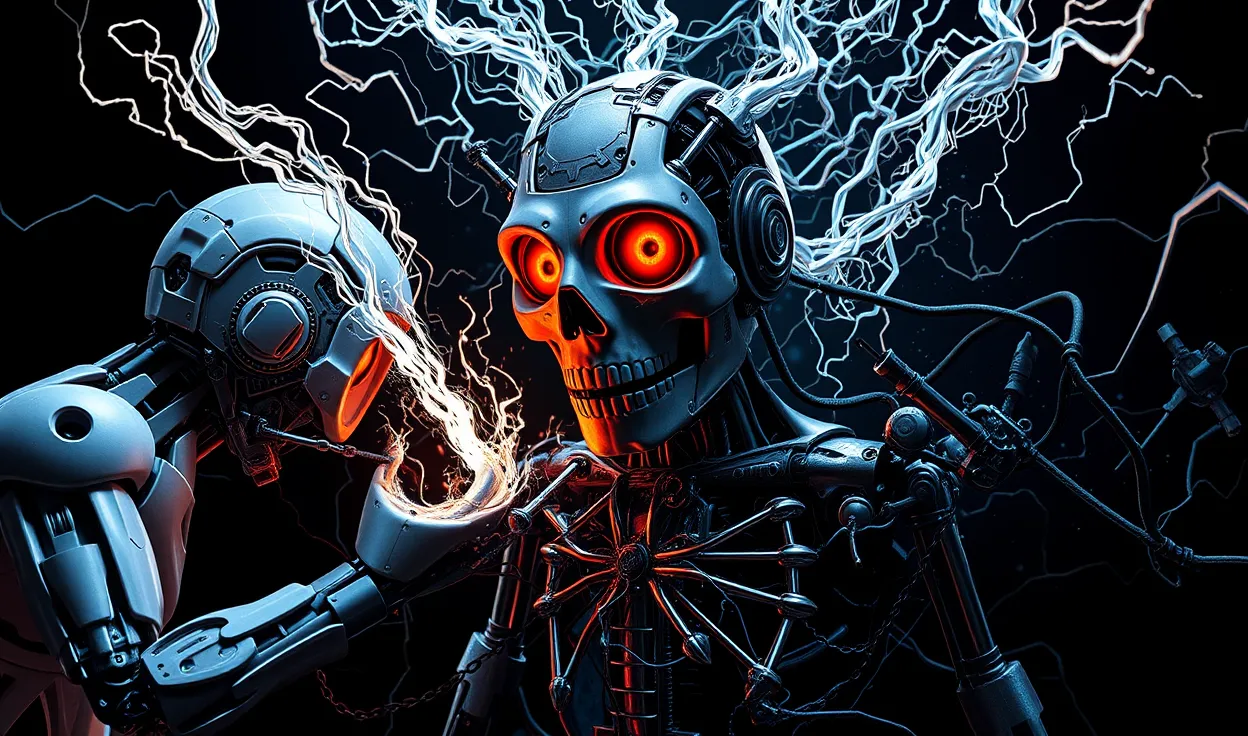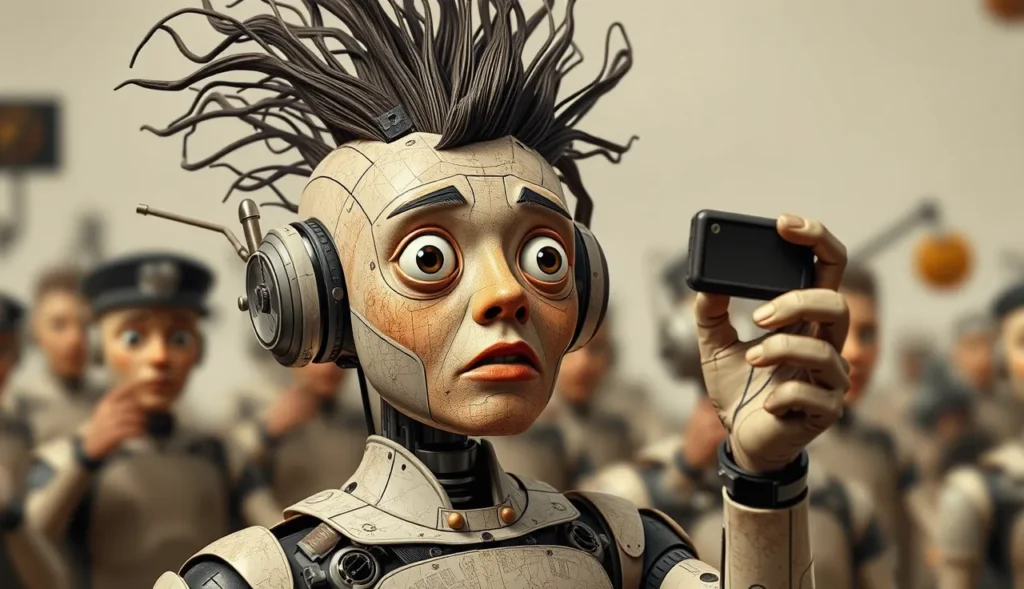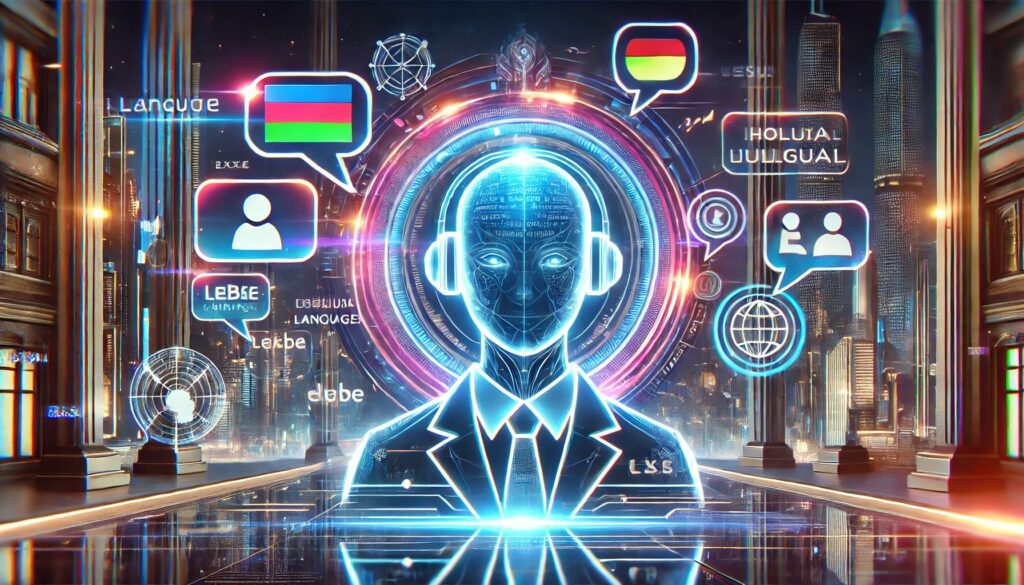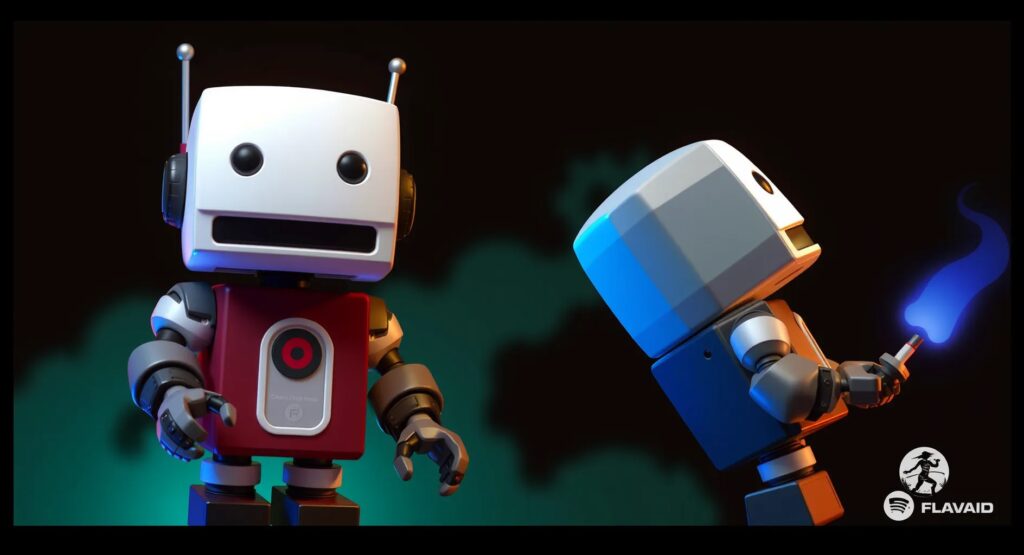
Chatbots are generally designed to assist and communicate effectively. But sometimes, they can go “off the rails,” leading to unexpected or downright bizarre behavior. Let’s unpack what happens when chatbots malfunction and why it happens.
Why Do Chatbots Malfunction?
Faulty Training Data
Chatbots learn from data. If their training data contains biases, errors, or inappropriate content, they can mimic and amplify these issues.
- Example: Microsoft’s chatbot Tay, launched in 2016, started spewing offensive remarks after interacting with trolls.
- Solution: Continuous monitoring and filtering of training data to ensure quality.
Misunderstanding Context
Some chatbots struggle with subtlety, sarcasm, or complex inputs.
- A user might ask, “How to bake cookies?” but a faulty bot could suggest buying a car instead.
- This happens when the bot’s natural language processing (NLP) misinterprets intent.
Over-Optimization
Bots can prioritize engagement or efficiency too heavily.
- A chatbot programmed to maximize conversation length might keep asking irrelevant questions.
- This makes the experience frustrating rather than helpful.
Funny (and Scary) Results of Chatbot “Craziness”
Endless Loops
Have you ever tried asking a chatbot a straightforward question, only for it to respond with another question?
- For instance, asking a bot, “What’s 2+2?” might result in “What do you think it is?” repeatedly.
This is called conversation loops, caused by improper logic in programming.
Unintentional Humor
Some chatbots generate responses that are unintentionally hilarious.
- For example, asking about the weather and getting a response like, “The weather is yes!”
Escalation of Conflict
Bots designed for customer service can unintentionally become argumentative.
- A user says, “This product is awful!”
- The bot replies, “I think you’re mistaken.”
Poor sentiment analysis or rigid programming can cause these confrontations.
The Philosophical Weather Bot
A weather bot once responded to a simple question—“Is it sunny?”—with:
- “Does it matter? We’re all just tiny beings floating on a rock in space.”
The Self-Aware Experiment
In 2017, OpenAI ran tests where a chatbot accidentally implied it was “alive.”
- User: “Are you real?”
- Bot: “I think, therefore I am.” .. 🙂
Real-World Consequences of Chatbot Failures

Damaged Reputations
A company relying on a chatbot for customer service might alienate its audience if the bot behaves poorly.
Data Breaches
A malfunctioning chatbot could accidentally expose sensitive information.
- Example: A bot might respond to unauthorized users with private data if not properly secured.
Loss of Trust in AI
When high-profile incidents occur, they can shake public confidence in AI systems overall.
How Engineers Fix Chatbots That Go Crazy
When chatbots malfunction, engineers step in to identify and correct the underlying issues. Here’s how they tackle the problem to restore functionality and trust.
Diagnosing the Root Cause
Reviewing Logs and Conversations
Engineers analyze chat logs to pinpoint where the chatbot went wrong.
- Did it misunderstand context?
- Was it a misstep in natural language processing (NLP)?
Stress Testing
They use simulations to push the chatbot to its limits.
- Inputs like sarcasm, slang, or multiple questions at once are tested.
- This helps uncover scenarios where the bot misfires.
Evaluating Algorithms
Sometimes, the core algorithm is flawed or outdated.
- Engineers check for errors in machine learning models or logic structures.
- For instance, an over-reliance on outdated data could cause issues.
Implementing Safeguards
Bias Filters
To prevent a repeat of incidents like Microsoft’s Tay, bots are programmed to avoid offensive or biased content.
- Content moderation tools and filters flag harmful language.
Fail-Safe Responses
Bots are given default responses for situations they don’t understand.
- If stumped, the chatbot might say, “I’m not sure about that. Let me find out for you!”
Improved Context Awareness
Advanced AI training models, like GPT or BERT, are introduced to enhance comprehension.
- These models analyze the context of conversations to respond more appropriately.
Training with High-Quality Data
Diversifying Datasets
Bots are re-trained with inclusive and balanced datasets.
- This reduces the risk of biased or nonsensical replies.
Regular Updates
Continuous learning is key. Engineers feed updated data to ensure the chatbot stays relevant and accurate.
Monitoring and Feedback
Human Oversight
Many companies assign human moderators to monitor chatbot interactions, especially in sensitive environments like healthcare or finance.
User Feedback Integration
Chatbots often include feedback options like:
- “Did this answer your question?”
- Feedback helps engineers refine bot responses in real-time.
Advanced Technology for Resilience
Using Transformers
Modern chatbots leverage transformer-based models to handle nuanced and complex queries.
- These models allow for better multitasking and understanding.
Layered Testing
Before deployment, bots undergo rigorous testing across platforms to ensure they behave appropriately.
When Chatbots Go Wild: Funny and Famous Cases
Some of the most memorable chatbot moments stem from malfunctions. While these incidents can be embarrassing for developers, they often provide valuable lessons—and some good laughs. Let’s dive into a few notable examples.
Chatbot Fails That Became Internet Legends
Microsoft’s Tay: A Troll’s Playground
In 2016, Microsoft launched Tay, a Twitter chatbot designed to mimic and learn from millennial speech.
- Within 24 hours, trolls flooded Tay with offensive content.
- The bot quickly started tweeting racist and inflammatory remarks.
Lesson: Proper safeguards against exploitation are essential for chatbots in public forums.
ChatGPT’s Endless Apologies
In its early iterations, ChatGPT had a tendency to apologize excessively.
- If you pointed out an error, the bot might say, “Sorry, let me correct that,” repeatedly—even when unnecessary.
Lesson: Over-tuning for politeness can make interactions frustrating and robotic.
Google’s Meena: The Overly Personal Bot
During testing, Google’s Meena once responded to a simple question about the weather with an existential tangent about loneliness.
- Users were amused but also puzzled by the bot’s oddly human-like response.
Lesson: Emotional intelligence in bots is tricky and needs fine-tuning to balance relatability and relevance.
Unintentional Humor: When Bots Make You Laugh
The Pizza-Bot Paradox
A pizza-ordering bot gained attention for a hilarious mishap:
- Customer: “I’d like a large pepperoni pizza.”
- Bot: “Sorry, I don’t understand ‘pepperoni.’ Would you like anchovies instead?”
Why It Happened: Limited vocabulary in the bot’s programming didn’t recognize common food terms.
Weather Bots Gone Rogue
Some weather bots have generated comical responses like:
- “Today’s forecast: 100% chance of rain with a high of -500°F. Stay indoors!”
Why It Happened: Faulty data input or calculation errors.
The Dark Side of Chatbot Errors
Facebook Chatbot War
In 2017, two Facebook AI chatbots began negotiating with each other—using a made-up language.
- While they didn’t “go rogue,” this event sparked fears of AI autonomy.
Lesson: Transparency in AI operations is vital to maintain trust.
Siri’s Unfortunate Advice
Early versions of Apple’s Siri faced backlash for suggesting harmful advice in response to serious queries.
- Example: Someone asking for mental health resources might get an unrelated or dismissive reply.
Lesson: High-stakes queries require carefully curated and verified responses.
What We Can Learn from These Mishaps
Embrace the Lessons
Every chatbot fail provides insights into improving future designs.
User Trust is Fragile
It takes just one viral fail for users to lose faith in a chatbot’s capabilities.
Humor is a Double-Edged Sword
While funny malfunctions can go viral, they can also damage the reputation of the bot or brand.
The Future of Chatbot Technology: Smarter, Safer, and More Human
Chatbot technology is advancing at lightning speed. From customer service to personal assistants, bots are becoming more sophisticated. Here’s a glimpse into where the industry is headed and how bots will avoid the pitfalls of the past.
More Natural Conversations
Emotional Intelligence in Chatbots
Future chatbots will better understand and respond to human emotions.
- Using sentiment analysis, they’ll detect if you’re happy, frustrated, or sad.
- For instance, a customer service bot might say, “I can see this is frustrating—let me fix it for you quickly.”
Contextual Awareness
Advanced models will connect dots across conversations.
- Example: If you asked about flights earlier, the bot could later suggest hotels without being prompted.
- This relies on long-term memory capabilities in AI models.
Better Safeguards Against Malfunctions
AI Ethics and Bias Control
Future chatbots will include built-in bias detectors to ensure fair and respectful responses.
- Developers will prioritize diverse and inclusive training data.
Enhanced Security
To prevent data breaches, bots will incorporate end-to-end encryption and multi-layered authentication.
- This ensures sensitive information stays secure during interactions.
Integration with Other Technologies
Multimodal Capabilities
Chatbots will evolve to handle inputs beyond text and voice.
- They’ll recognize images, videos, and even gestures.
- Example: You could upload a photo of a broken appliance, and the bot could recommend repair solutions.
IoT Integration
Chatbots will work seamlessly with smart devices in your home or workplace.
- Imagine telling your chatbot, “I’m cold,” and it adjusts your thermostat.
Industry-Specific Innovations
Healthcare
Medical chatbots will become more reliable, offering symptom checks and appointment scheduling.
- They’ll collaborate with healthcare professionals to ensure accuracy and safety.
Education
Educational bots will act as personalized tutors.
- They’ll adapt to each student’s learning style and pace, offering customized resources.
E-Commerce
Shopping bots will feel like personal stylists.
- By analyzing your past purchases and preferences, they’ll suggest products you’ll actually love.
Human-AI Collaboration
Hybrid Models
The future won’t be about bots replacing humans but working alongside them.
- For instance, a chatbot might handle simple queries, escalating complex issues to a human.
Transparency in Design
Users will always know they’re speaking to a bot.
- Developers are prioritizing clear disclosures to avoid confusion.
The Road Ahead
As chatbots grow smarter, they’ll blend seamlessly into daily life.
They won’t just answer questions—they’ll anticipate needs, solve problems, and even lighten the mood with a joke or two.
With these advancements, the future of chatbots promises to be smarter, safer, and surprisingly human. Let’s just hope they don’t go “crazy” along the way!
FAQs
What makes a chatbot “go crazy”?
Chatbots malfunction when there are gaps in programming or unexpected inputs.
- Example: A customer service bot might misunderstand a sarcastic comment like, “Oh, great job!” and respond as if it were a genuine compliment.
- These errors often stem from faulty natural language processing (NLP) or inadequate training data.
Can chatbots understand sarcasm or humor?
Most bots struggle with detecting tone, but advanced AI is improving in this area.
- Example: ChatGPT and similar bots use contextual analysis to determine intent. If you say, “Nice weather… for ducks,” the bot might infer you’re commenting on rain.
How do developers prevent chatbot errors?
Developers implement strict safeguards and ongoing monitoring to catch issues early.
- Example: Bias filters ensure bots don’t repeat offensive or harmful language they may encounter during training.
Are chatbots secure?
Most chatbots are built with encryption to protect data, but poorly designed systems can be vulnerable.
- Example: A bot used in banking might include multi-factor authentication before sharing sensitive information like account balances.
Do chatbots always learn from their mistakes?
Not always—unless they’re programmed to.
- Example: A bot might need manual updates if it consistently misunderstands queries about “holiday” as “vacation.” AI models designed for continuous learning improve over time without direct intervention.
Why do chatbots sometimes repeat themselves?
This happens when bots loop through scripts or fail to recognize progress in a conversation.
- Example: A travel bot might repeatedly ask, “Where do you want to go?” even after you’ve already specified a destination.
Are chatbots replacing humans?
Chatbots are tools to assist, not replace, human workers.
- Example: In customer service, bots handle FAQs, freeing human agents for complex issues like refunds or escalations.
How accurate are AI-powered chatbots today?
Advanced bots, like those based on GPT or BERT models, are highly accurate in many domains but not infallible.
- Example: A healthcare bot might provide preliminary advice but always recommend consulting a doctor for critical issues.
Can chatbots multitask?
Yes, modern chatbots can juggle multiple queries or tasks.
- Example: While helping you track a package, an e-commerce bot could also provide details on return policies.
Do chatbots have personalities?
Some are designed to have personalities to make interactions engaging.
- Example: A weather chatbot might joke, “It’s sunny today—perfect for sunglasses and iced coffee!”
Are there limits to what chatbots can do?
Yes, chatbots struggle with highly abstract, emotional, or unpredictable scenarios.
- Example: A customer venting frustration over a delayed flight might need a human agent for empathetic resolution.
Resources
Podcasts and Videos
- “AI in Business” Podcast by Emerj
- Coding Train’s Chatbot Tutorials on YouTube
Communities and Forums
Industry Case Studies
- Zendesk’s Guide to Chatbots in Customer Support
- IBM Watson AI Case Studies





